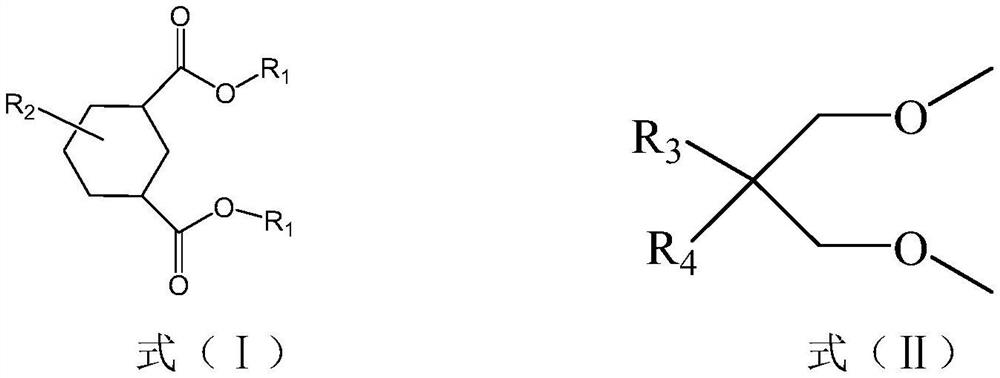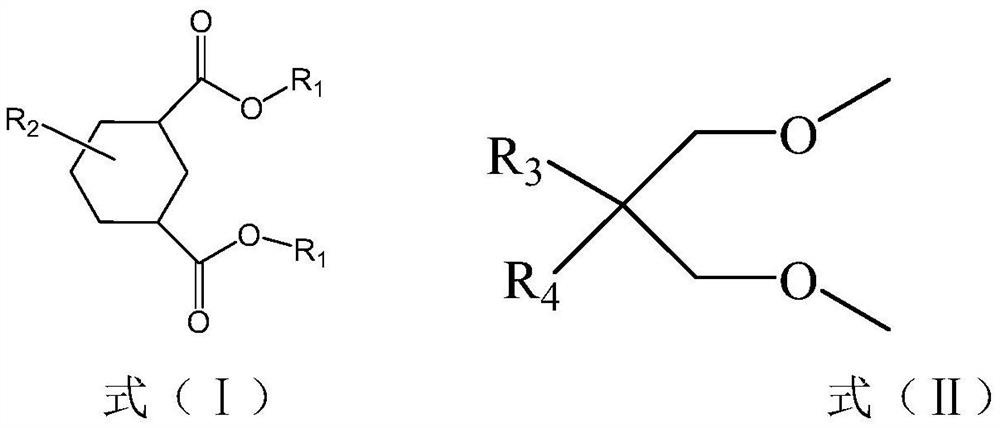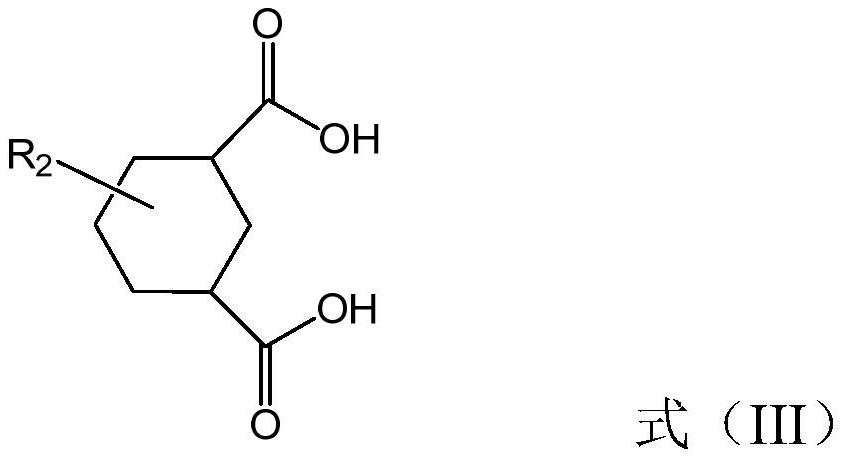A solid catalyst component, catalyst system and prepolymerized catalyst for olefin polymerization
A solid catalyst, a technology for olefin polymerization, applied in the field of olefin polymerization catalysts, can solve problems such as unfavorable environmental protection and safety, unstable compounds, strong corrosiveness, etc., and achieve the effects of excellent comprehensive performance, improved polymerization activity, and high stereoregularity.
- Summary
- Abstract
- Description
- Claims
- Application Information
AI Technical Summary
Problems solved by technology
Method used
Image
Examples
Embodiment approach
[0033] According to one embodiment, the solid catalyst component comprises a reaction product of a magnesium compound, a titanium compound and the internal electron donor compound, wherein the molar ratio of the magnesium compound, the titanium compound and the internal electron donor compound can be 1:( 0.5~150): (0.02~0.5).
[0034] Wherein, the magnesium compound can be selected from magnesium dihalide, alkoxy magnesium, alkyl magnesium, hydrate or alcoholate of magnesium dihalide, and a halogen atom in the molecular formula of magnesium dihalide replaced by alkoxy or haloalkoxy At least one of the derivatives substituted by the group.
[0035] Preferably, the magnesium compound is a magnesium dihalide and / or an alcoholate of magnesium dihalide.
[0036] Further preferably, the magnesium compound is an alcoholate of magnesium dihalide.
[0037] The titanium compound may be selected from titanium tetrachloride, titanium tetrabromide, titanium tetraiodide, tetrabutoxytitani...
Embodiment 1~5 and comparative example 1
[0077] (1) Preparation of solid catalyst component a
[0078] Under nitrogen protection, add 4.8g of anhydrous magnesium chloride, 19.5g of isooctyl alcohol and 19.5g of decane solvent into a 500mL reactor equipped with a stirrer, heat to 130°C, and react for 1.5 hours until the magnesium chloride is completely dissolved, then add 1.1g Phthalic anhydride, continue to react at 130°C for 1 hour to obtain an alcoholate; cool the alcoholate to room temperature.
[0079] Under the protection of nitrogen, the above alcoholate was added dropwise to 120mL titanium tetrachloride solution pre-cooled to -22°C, and the temperature was slowly raised to 100°C, and 6 mmol of the compound internal electron donor compound in Table 1 was added, and the temperature was raised to 110°C was maintained for 2 hours, and the mixture was filtered while hot. Then add another 120mL of titanium tetrachloride, raise the temperature to 110° C. to react for 1 hour, filter, wash the solid particles 4 times ...
PUM
 Login to View More
Login to View More Abstract
Description
Claims
Application Information
 Login to View More
Login to View More - R&D
- Intellectual Property
- Life Sciences
- Materials
- Tech Scout
- Unparalleled Data Quality
- Higher Quality Content
- 60% Fewer Hallucinations
Browse by: Latest US Patents, China's latest patents, Technical Efficacy Thesaurus, Application Domain, Technology Topic, Popular Technical Reports.
© 2025 PatSnap. All rights reserved.Legal|Privacy policy|Modern Slavery Act Transparency Statement|Sitemap|About US| Contact US: help@patsnap.com



